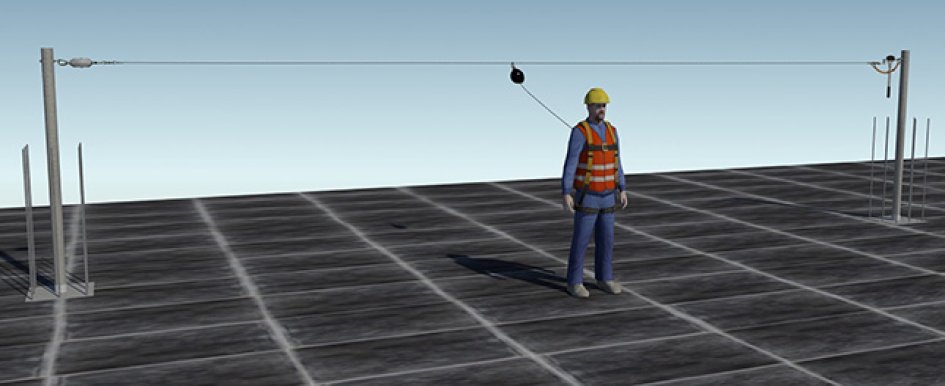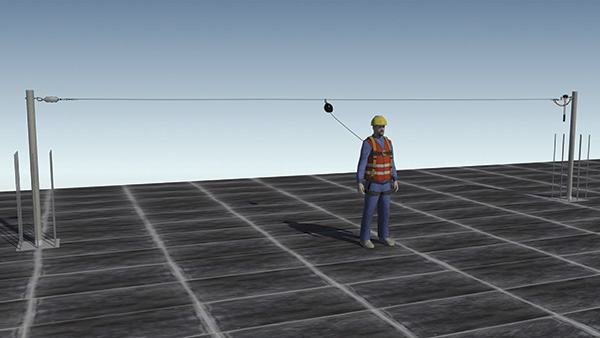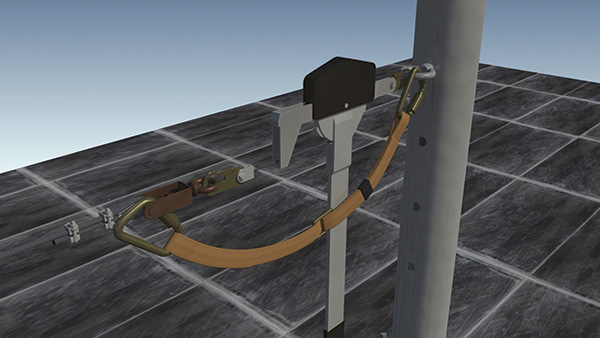
The idea of construction workers playing video games on the jobsite would make most construction professionals cringe. Most construction executives who walked on a jobsite and saw workers playing video games would likely fire those workers immediately. But what if those employees were looking at a video game showing an instructional video on window flashing, a jobsite safety animation or a demonstration of how to best access a site for a large delivery?
All of these applications for video games (and many more) are coming to the construction industry quicker than you can say “Pac-Man.”
Most people who work in construction are aware that the generation that will be taking over the industry grew up on computers and video games. If you look at your staff, the people under the age of 35 probably have at least 25 years of experience in a video game and technological world. As this group enters the most productive years of their careers, they expect technology to be a part of their lives. This generation is familiar with user graphical interface and comfortable with maneuvering through virtual environments. Interacting with a gaming interface for visualization or for instructional purposes is second nature to this and subsequent generations. This generation also expects data at their fingertips.

During the last 14 years, we have seen the design and construction industry transition from the 2D plan to the 3D-modeled world. This 3D technology has been a valuable visualization tool for owners, designers and the construction industry. The development of this 3D modeling technology and the creation of low-cost, accessible “game engine” software has created the perfect opportunity to combine visualization and education. The combination of these technologies has made experimenting with game development technology for construction applications accessible. The traditional 3D fly-through architectural animation presents a predetermined fixed route selected by the creator. By contrast, a game engine gives the user a first-person walk-through experience. Through the use of a mouse, touch pad and keyboard, users can actually control the movement of the camera as though they are walking through the environment. This allows users to focus on what they are interested in seeing from multiple angles, if necessary. They can select the elements of the physical building they want to see in the model, as opposed to being limited to seeing a determined animation. This can be a useful tool for visualization, but the following examples depict a much deeper benefit of this application.
Example 1:
Recently, a design-build client came to us with a common site planning issue. They were designing a parking lot for a commercial building renovation. The dilemma was providing enough parking while allowing semi-trailer trucks access to the back of the building. This procedure required the truck to make multiple turns while backing up, complicating the approach. Clearly, this would be an expensive issue to fix if the company constructed the parking lot only to find that the trucks were unable to navigate it. To ensure they provided sufficient parking and circulation space, we needed to find a way to simulate a truck driving through the lot with a realistic turning radius. Rather than picking a point of view, putting in a camera and setting it to render, we used gaming technology to create simulations. We were able to clearly show the owner, engineer and project manager the tight spots so adjustments could be made. In the old days, this was done with a radius chart, but the chart did not always show the technical hitches of backing up a truck. In order to save time testing multiple options, we showed them this simulation in a game engine application. This allowed the project stakeholders to mimic the truck backing up through various scenarios while viewing the process from the driver’s seat, the loading dock or the parking lot. They were also able to control the playback of the simulation with the arrow keys on their computer’s keyboard and then use the mouse to rotate the camera around the vehicle to get the point of view that most clearly showed the problem areas. This simple application allowed the engineer to avoid spending time on redesigning. The owner was able to understand the issue and the implications, and the contractor was able to build the parking lot correctly the first time.
Example 2:
We are currently working with a company that builds partially prefabricated agricultural buildings. Initially, they asked us to create animations from their construction manual. The intention was that these animations would more clearly illustrate to their field crews how to build one of their buildings. This has now expanded into running these animations in a game engine application. Beyond the visualization, we are now making the animations interactive instructional videos. The application allows users to step through the construction process at their speed and to review prior steps if necessary. The user has the ability to maneuver the camera around the action in each step to see how the more complicated assemblies are completed.
The next step in the process is to embed a series of questions into the “video game” that tests people to see how well they understood what they have just watched. Once the users have finished watching the instructional component, they can either review the instructional component or take the test. The test takes them back through the assembly instructions, requiring them to answer questions relevant to each step in order to progress to the following step. A user’s score can then be tracked and saved in a database, allowing the company to track progress and document training.
Example 3:
Another application is the video game for jobsite safety instruction and testing. Many scientists agree that the majority of people are visual learners. When dealing with something as important as safety, training materials must be presented in the best possible way. Implementing the safety training application in a video game format allows the user to interact with the instructional information. This visual interaction can boost the user’s ability to retain instructions.
We are currently working with a general contractor in the Midwest to animate some of their most critical safety applications such as fall protection. In this application, users can move through the instructions at a pace that is comfortable for them. Additionally, the ability to control the position of the camera allows the user to watch the animation from any conceivable angle. This ensures that the animation will be as clear as possible for each user. Once again, the testing module has been added to help the contractor evaluate the employee’s comprehension and retention. These instructional videos also can be made multilingual with the click of a mouse, a critical requirement in today’s world. Finally, since new safety regulations are continually implemented, the game engine can provide immediate updates to the latest adaptations or changes to safety instructions via the web.

What is next?
With new hardware technologies such as gesture reading devices that allow users to control computer interface interaction with simple hand movements, smartphones more powerful than computers of just a few years ago, and the development of virtual reality headsets, access to these video game applications is becoming easier by the day. The potential for using video game technology for construction simulation is continuing to reach new heights, and we can expect to see exciting applications of the technology in the near future.
These technologies are valuable tools in the world of construction, providing information and simulations that help construction professionals avoid costly mistakes and oversights. The world of the video game in the family room 20 years ago was the nucleus of the transition of this technology from simple games to better communication and training on our jobsites. Construction might not be the first thing that comes to mind when you think about video games. But gaming technology, with its interactive simulations and detailed information, is a tool you cannot afford to ignore.
